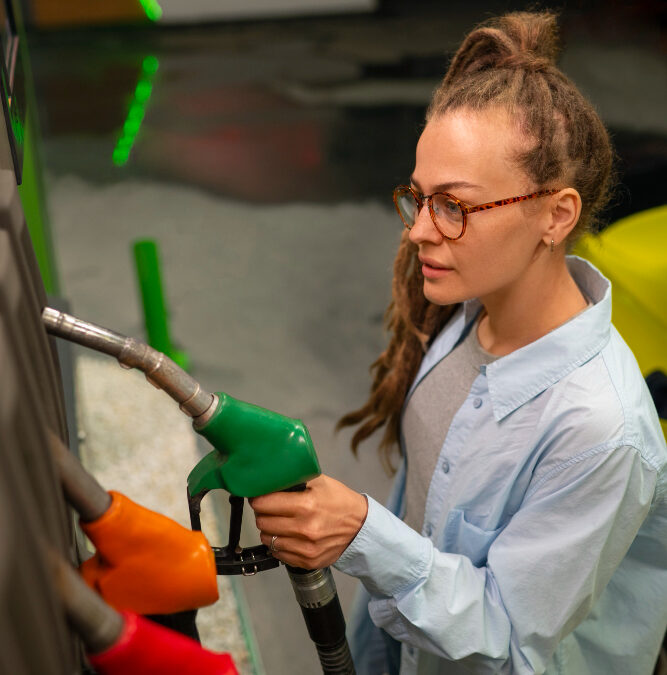In every combustion engine, whether powering a ship, a truck, or an industrial generator, the fuel nozzle is a small but essential part. Its function – delivering fuel into the combustion chamber in a precise and controlled manner – is crucial to engine performance, fuel economy, and emissions control.
What is a Fuel Nozzle?
A fuel nozzle (also called a fuel injector in some systems) is a mechanical or electronically controlled device designed to inject fuel into the engine’s combustion chamber. It must deliver the fuel in the right amount, at the right pressure, and in a fine mist to ensure complete and efficient combustion.
Expanded Functions of a Fuel Nozzle
Accurate Fuel Delivery
Ensures fuel is injected in the correct quantity to match engine load and speed.
- Fine Atomization
Breaks down the fuel into tiny droplets to improve fuel-air mixing and combustion efficiency. - Pattern Formation
Delivers the fuel in a specific spray angle and direction to optimize flame propagation and combustion. - High-Pressure Operation
Operates at pressures from 200 to over 2,000 bar in modern engines to improve atomization. - Cold Start Assistance
In colder conditions, special nozzle designs help improve ignition for reliable engine starts.
Additional Types of Fuel Nozzles
- Swirl Nozzles: Introduce a spinning motion to the fuel for enhanced atomization.
- Pintle Nozzles: Used in older diesel engines; simple and cost-effective, but less efficient.
- Hole-Type Nozzles: Common in modern high-speed diesel engines; multiple small holes ensure fine mist and wide coverage.
- Multi-Orifice Nozzles: Ideal for large-bore engines like marine and industrial diesel engines.
Advantages of High-Quality Fuel Nozzles
- Better fuel economy
- Lower engine emissions (NOx, CO2, soot)
- Smoother engine performance
- Reduced knocking and vibration
- Prolonged engine life
- Compliance with strict emission regulations (IMO, Euro, EPA standards)
Factors Affecting Nozzle Performance
Fuel Quality
Poor-quality or contaminated fuel can cause deposits and clog the nozzle tip.
- Injection Timing
Delays or inconsistencies in injection timing affect power output and efficiency. - Pressure Variations
Inadequate or fluctuating fuel pressure can disrupt spray quality. - Engine Load and RPM
Nozzles must adapt to variable loads and speeds, especially in marine and industrial applications.
Fuel Nozzles in Different Applications
- Marine Engines: High-pressure diesel injection nozzles with corrosion-resistant design.
- Automotive Engines: Electronically controlled injectors for precise delivery and emissions control.
- Aviation Turbines: Atomizing nozzles for fine fuel mist and stable flame propagation.
- Industrial Burners: Dual-fluid or air-atomized nozzles for large-scale combustion systems.
Troubleshooting Fuel Nozzle Problems
| Problem | Possible Cause | Effect |
|---|---|---|
| Uneven Spray Pattern | Deposits on nozzle tip | Incomplete combustion, smoke |
| Delayed Fuel Injection | Faulty solenoid or clogged lines | Power loss, hard starting |
| Dripping Fuel | Worn or damaged nozzle needle | Fuel wastage, increased emissions |
| Misfiring or Knocking | Poor atomization or incorrect angle | Rough engine operation, damage risk |
Maintenance Guidelines
- Use clean, filtered fuel to prevent internal clogging.
- Perform regular cleaning or ultrasonic cleaning of the nozzle tips.
- Inspect spray pattern using a test bench or diagnostic tool.
- Replace nozzles at recommended service intervals or when performance drops.
- Store spare nozzles in a dry, clean environment to avoid corrosion.
Innovations in Fuel Nozzle Technology
- Piezoelectric Fuel Injectors
These advanced nozzles use piezo crystals that respond almost instantly to electrical signals. Benefits include ultra-fast response times, precise spray control, and reduced emissions. Common in modern high-speed diesel and automotive engines. - Variable Nozzle Design
Adaptive nozzles can adjust spray angles or fuel quantities in real time, optimizing performance across different operating conditions. This innovation is especially useful in hybrid engines and smart combustion systems. - 3D Printed Fuel Nozzles
Aerospace and industrial sectors are adopting additive manufacturing for nozzle production. 3D printing enables complex internal passages for better airflow and cooling, improving fuel distribution and heat resistance. - Coated Nozzles
Nozzles are increasingly being coated with materials like ceramic or diamond-like carbon (DLC) to improve wear resistance, reduce friction, and prevent carbon buildup in harsh environments.
Fuel Nozzles and Emission Standards
As emission regulations tighten globally (IMO Tier III, Euro 6, EPA Tier 4), fuel nozzles have become essential tools for achieving compliance. Their precision affects:
- NOx emissions (nitrogen oxides)
- Particulate matter (soot, ash)
- CO2 emissions (fuel combustion efficiency)
Modern engines rely on multi-stage injection and optimized spray patterns—functions controlled entirely by the fuel nozzle and injection system—to meet environmental requirements without sacrificing performance.
Fuel Nozzle Materials and Design Considerations
- Materials Used:
High-grade stainless steel, Inconel alloys, and ceramics are common in nozzle construction due to their strength, corrosion resistance, and thermal tolerance. - Design Criteria:
- Spray cone angle
- Flow rate and velocity
- Number and size of orifices
- Tip geometry for air-fuel mixing
- Pressure capability
Every application—from a tugboat to a gas turbine—demands specific nozzle designs for optimal performance.
Conclusion
The fuel nozzle may be small, but its role in engine efficiency and reliability is enormous. Whether you’re managing a marine fleet, a power plant, or a vehicle fleet, investing in high-quality nozzles and regular maintenance will pay off in better performance, lower operating costs, and longer engine life.
Understanding the science behind this component helps engineers and operators make smarter decisions and keep engines running at their best.
